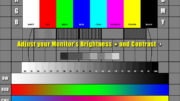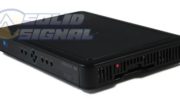Actually you can. But you have to know what you’re doing. The total run between receivers is generally 250-300 cable feet, meaning for example a 200 foot run on one and a 100 foot run on the other. There are a lot of ways you can get the cable run you need, but the best is to carefully plan where you’re going to put your multiswitch. If you want to know more, check out our tutorial here.
However, once you get past that length, you’ll have signal problems especially with Genie clients. You’ll experience slow performance, picture breakups, all the sorts of things that make watching TV no fun at all. And here’s the worst news: there’s nothing you can do about it. While normal satellite signals can be amplified, there’s no amplifier that will work with SWM signals.
It’s hardly ever a problem extending traditional satellite signals as far as you want, especially if you’re using external multiswitches along the way. Once you get into that SWM technology though, you’re in trouble. In additiona to the traditional “return path” that’s used for live TV signals, there’s all that signal traveling back and forth between TVs when you’re sharing programs between DVRs or using Genie clients. These signals all travel using the 475-625MHz frequencies and while you can get amplifiers that go one way, there isn’t an amplifier that is designed to go the other way. That’s the problem.
Yes, you could design and even build an amplifier that went two ways, but it’s not as easy as simply taking two amplifiers and putting them in two different directions. What you really need to do is receive all the signals somewhere in the middle of the run, reinterpret them, amplify them and send them back down. This could potentially make the client seem sluggish as the signals are processed in the amplifier, and depending on DIRECTV’s ultra-secret protocols, it could potentially cause problems that make the signal unwatchable. DIRECTV takes its copy protection seriously and won’t even tell third-party manufacturers exactly what will and won’t work.
When you look at all the potential problems as well as the small number of people who would really benefit, unfortunately it makes the cost of developing such an amplifier too high to really consider. Luckily, you have other options. You can use multiple dishes, or run traditional satellite lines to two different locations, or even make up the last 50 or so feet with a wireless Genie client. If you’re curious, start a thread here at our forums and we can help you get your installation right the first time!





